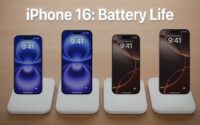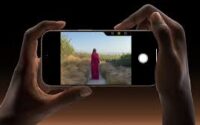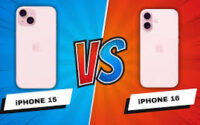iPhone 16: Will It Finally Support USB-C?
As the release of the iPhone 16 approaches, one of the most heated topics of discussion is whether Apple will finally transition from its proprietary Lightning port to the widely adopted USB-C. For years, users, regulators, and tech enthusiasts have called for this change, and with recent regulatory pressure from the European Union, it seems Apple may have no choice but to embrace USB-C.
In this article, we’ll explore the ongoing debate about USB-C vs. Lightning, examine the potential reasons behind Apple’s shift, and discuss what this change could mean for iPhone 16 users.
1. USB-C vs. Lightning: Why the Push for Change?
The Lightning connector, introduced with the iPhone 5 in 2012, has been a staple of Apple’s ecosystem for over a decade. However, despite its compact size and ease of use, Lightning has several limitations when compared to USB-C, which has become the standard for most modern devices, including laptops, tablets, and Android smartphones.
Benefits of USB-C Over Lightning
- Faster Data Transfer: USB-C supports faster data transfer rates than Lightning. While Lightning is limited to USB 2.0 speeds (480 Mbps), USB-C can deliver speeds of up to 40 Gbps with Thunderbolt 3 and USB 4 standards, which is crucial for transferring large files like 4K videos and RAW photos.
- Faster Charging: USB-C supports higher power delivery, enabling faster charging. The iPhone 16, if equipped with USB-C, could benefit from this, potentially allowing users to charge their devices more quickly than current iPhones.
- Universal Compatibility: One of the biggest advantages of USB-C is its universality. It’s used in laptops, tablets, cameras, and even gaming consoles, making it easier for users to carry just one cable for multiple devices. This shift would streamline the Apple ecosystem for users who already use USB-C with their MacBooks and iPads.
Why Has Apple Stuck with Lightning?
Despite the benefits of USB-C, Apple has been slow to transition away from Lightning. Some speculate that this is because of Apple’s lucrative MFi (Made for iPhone/iPad) program, which allows third-party accessory manufacturers to produce Lightning-compatible accessories under Apple’s licensing agreement.
Additionally, Apple has historically been cautious about moving away from proprietary technologies that give them more control over the user experience and product ecosystem. However, the growing demand for USB-C and increasing regulatory pressure may force Apple’s hand.
2. European Union Mandate: The Tipping Point for USB-C
The European Union (EU) has played a significant role in pushing Apple toward adopting USB-C. In 2022, the EU passed legislation requiring all mobile devices, including smartphones, to use a universal charging port—specifically USB-C—by 2024. This law aims to reduce electronic waste and simplify charging solutions for consumers, allowing them to use one charger for all devices, regardless of brand.
How Does the EU Law Affect Apple?
With the iPhone 16 likely to launch in 2024, Apple may be legally required to adopt USB-C for devices sold in the European market. While Apple could, in theory, create region-specific models with different ports, it’s more likely they will transition globally to streamline production and reduce fragmentation.
This legislative pressure could be the final push Apple needs to replace the Lightning port with USB-C on the iPhone 16. The switch would not only satisfy regulatory requirements but also align with industry standards, benefiting users around the world.
3. What USB-C on iPhone 16 Means for Users
If Apple introduces USB-C on the iPhone 16, it could bring a host of benefits for both new and existing users. Here’s what you can expect:
Faster Charging and Data Transfer
As mentioned earlier, one of the biggest advantages of USB-C is its support for faster charging and data transfer speeds. The iPhone 16 could support higher wattage charging, significantly reducing the time it takes to charge the device fully.
Additionally, users who frequently transfer large files—such as photographers and videographers—would appreciate the faster data transfer speeds that USB-C provides. This would make offloading 4K video files or high-resolution photos a much smoother and quicker process.
Universal Accessories
Switching to USB-C would allow iPhone users to share chargers and accessories with other devices, reducing the need for multiple cables. This could be particularly convenient for people who already own USB-C accessories for their MacBooks, iPads, or other USB-C devices, creating a more unified Apple ecosystem.
Backward Compatibility Challenges
While USB-C brings many advantages, the switch could pose some compatibility challenges for users who have accumulated a collection of Lightning accessories over the years, such as docks, chargers, and earphones. However, Apple would likely offer USB-C to Lightning adapters, similar to when they transitioned from the 30-pin connector to Lightning in 2012.
Environmental Impact
Apple has made significant strides in reducing its environmental footprint, and adopting USB-C would further contribute to these efforts. By reducing the need for separate charging cables, the transition to USB-C could help lower electronic waste, a key goal of the EU’s regulation and one that aligns with Apple’s commitment to sustainability.
4. Will Apple Introduce Any Proprietary Features?
While many expect Apple to embrace the USB-C standard, there’s speculation that the company could implement some proprietary features within the port, as they’ve done with the Lightning port. For example, Apple could design customized cables or accessories that unlock certain features, such as faster charging or enhanced data transfer speeds, but only if users purchase Apple-certified cables.
MFi Program for USB-C?
There’s a possibility that Apple could extend its MFi program to USB-C accessories. This would allow Apple to maintain control over third-party accessory manufacturers while ensuring a consistent quality standard across the products that connect to its devices.
5. Wireless Future: Could Apple Skip USB-C Altogether?
Another interesting theory is that Apple may aim to eliminate ports entirely in the near future, relying solely on wireless charging and data transfer. Apple has already introduced MagSafe technology, and the trend toward wireless solutions has been growing.
However, while wireless charging and data transfer are becoming more popular, they are still not as fast or reliable as wired connections. For this reason, it’s unlikely that Apple will skip USB-C entirely on the iPhone 16, though the company could be setting the stage for a portless iPhone in the next few years.
6. Conclusion: Will the iPhone 16 Finally Support USB-C?
All signs point to USB-C finally making its way to the iPhone 16, marking the end of the Lightning era. With regulatory pressure from the EU and a growing demand from users for faster charging and more universal compatibility, Apple seems poised to make the switch.
For users, the transition to USB-C means faster charging, quicker data transfers, and a more streamlined experience across all Apple devices. While there may be some challenges for those with Lightning accessories, the overall benefits of USB-C make this a welcome and overdue change for the iPhone lineup.
As we await the official announcement, one thing is clear: USB-C on the iPhone 16 could redefine how Apple users interact with their devices, making life more convenient and keeping the iPhone in line with global standards.


